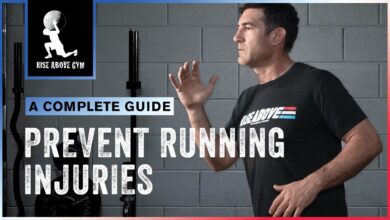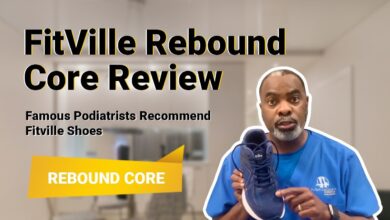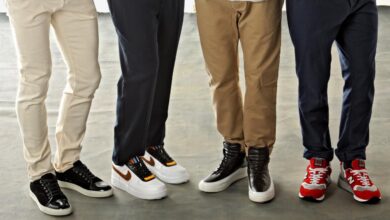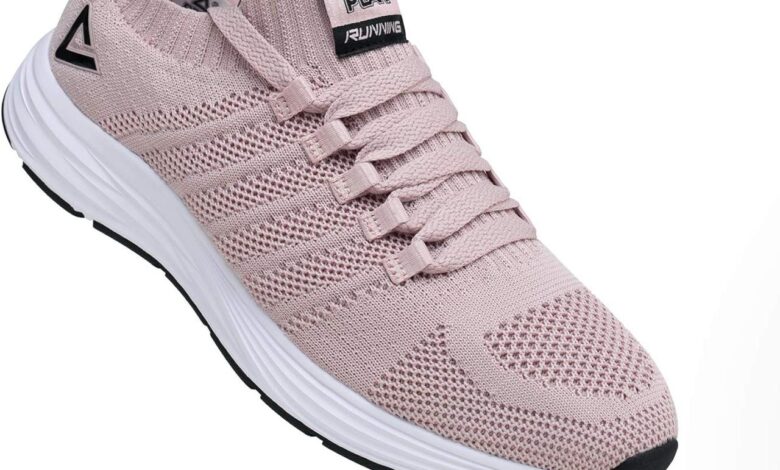
How to Shop for the Best Running or Walking Shoe
How to shop for the best running or walking shoe – Finding the perfect running or walking shoe is crucial for comfort, performance, and injury prevention. It’s an investment in your well-being, and a little knowledge goes a long way. This guide will walk you through the key considerations, from understanding your individual needs to exploring the vast world of shoe brands and models.
We’ll delve into the anatomy of a running shoe, highlighting the importance of cushioning, stability, and flexibility. You’ll learn how to measure your feet correctly, choose the right size, and identify signs of an ill-fitting shoe. We’ll also explore different shoe materials and their benefits, empowering you to make informed decisions.
Understanding Your Needs: How To Shop For The Best Running Or Walking Shoe
Finding the perfect running or walking shoe is a personal journey, and it starts with understanding your unique needs. The right shoe can make all the difference in your comfort, performance, and injury prevention.
Understanding the Difference Between Running and Walking Shoes
Running shoes are designed to withstand the high impact forces generated during running, while walking shoes provide support and cushioning for lower-impact activities.
- Running shoes feature a more robust construction with a thicker midsole for shock absorption and a wider base for stability.
- Walking shoes are typically lighter and more flexible, offering greater comfort and breathability for everyday use.
Considering Your Activity Level and Running Style
The type of shoe you need depends on how often you run or walk and your running style.
- Frequency: Casual walkers may benefit from a comfortable, versatile walking shoe, while dedicated runners might require specialized running shoes with advanced features like motion control or stability.
- Running Style: Running style, or pronation, refers to the way your foot rolls inward during a stride. This can be neutral, overpronation (excessive inward roll), or underpronation (minimal inward roll). Understanding your pronation helps you choose a shoe that provides the right support and cushioning for your foot mechanics.
Identifying Your Foot Type
There are several ways to determine your foot type:
- Wet Test: Wet your foot and step onto a piece of paper. Observe the footprint. If the inside edge of your foot shows more wear, you likely overpronate. If the outside edge shows more wear, you may underpronate. If the wear is evenly distributed, you likely have a neutral foot type.
- Professional Assessment: Consult a podiatrist or running store specialist for a gait analysis. They can observe your running or walking gait and recommend a shoe that aligns with your foot type and biomechanics.
Key Shoe Features
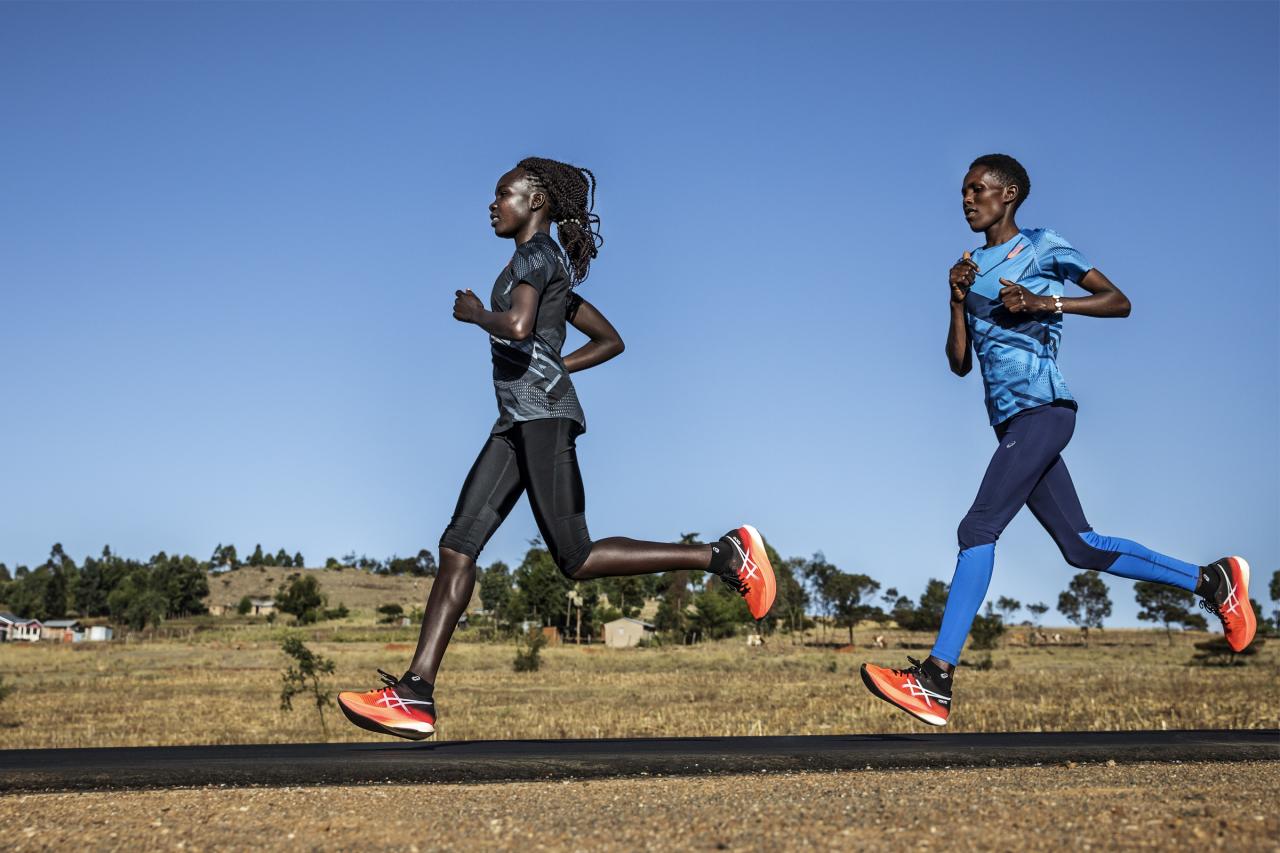
Understanding the anatomy of a running shoe is crucial for choosing the right pair for your needs. Each component plays a vital role in providing support, cushioning, and flexibility, directly impacting your comfort and performance.
Shoe Anatomy
The anatomy of a running shoe consists of several key components, each with a specific function.
Finding the right running or walking shoe is like finding the perfect recipe – it’s all about the right ingredients and technique. Just like you need to master essential cooking skills like chopping, sautéing, and simmering, essential cooking skills everyone should master , you need to understand your foot type, gait, and desired activity level to choose the right shoe.
So, whether you’re a seasoned runner or just starting out, take the time to find the perfect pair that will support your journey, just like the right recipe can enhance your culinary adventures.
- Upper: The upper is the part of the shoe that covers your foot. It is typically made of mesh, leather, or synthetic materials. The upper’s primary function is to provide breathability, support, and a comfortable fit. It also contributes to the shoe’s overall aesthetics.
- Midsole: The midsole is the layer of foam that sits between the outsole and the upper. It is responsible for cushioning, shock absorption, and providing a comfortable ride. Different midsole materials offer varying levels of cushioning and responsiveness.
- Outsole: The outsole is the bottom layer of the shoe that comes into contact with the ground. It is made of durable rubber or other materials designed for traction and durability. The outsole’s pattern and design influence grip, stability, and overall wear resistance.
- Heel Counter: The heel counter is a rigid piece of material that helps to support and stabilize the heel. It is typically made of plastic or thermoplastic polyurethane (TPU) and helps prevent heel slippage and improve overall stability.
- Toe Box: The toe box is the front part of the shoe that provides space for your toes. A roomy toe box allows for natural foot movement and prevents discomfort or pressure on the toes.
- Lacing System: The lacing system is the mechanism used to secure the shoe to your foot. Different lacing systems offer varying levels of adjustability and comfort. Some common lacing systems include traditional eyelets, speed lacing, and Boa closure systems.
Cushioning, Stability, and Flexibility
Cushioning, stability, and flexibility are crucial factors to consider when choosing running shoes. They directly impact comfort, performance, and injury prevention.
- Cushioning: Cushioning refers to the shoe’s ability to absorb shock and provide a comfortable ride. This is especially important for runners who experience high impact forces or have joint pain. Shoes with high cushioning typically have thicker midsoles made of soft materials like EVA foam or gel.
Finding the perfect running or walking shoe is all about knowing your feet and your needs. Just like knowing how to transform last night’s dinner into a delicious breakfast 5 ways turn last nights leftovers mornings breakfast , a little creativity can go a long way.
Consider your gait, arch support, and the terrain you’ll be running on – it’s all about finding the right fit for your unique stride!
- Stability: Stability refers to the shoe’s ability to control the foot’s movement and prevent excessive pronation or supination. Pronation is the inward rolling motion of the foot during walking or running, while supination is the outward rolling motion. Shoes with good stability typically have a firmer midsole and a medial post (a wedge of firmer material on the inside of the shoe) to help control the foot’s movement.
- Flexibility: Flexibility refers to the shoe’s ability to bend and flex with the foot’s natural movement. Flexible shoes allow for a more natural gait and can help improve performance. Shoes with high flexibility typically have a thinner midsole and a more flexible outsole.
Shoe Materials
The materials used in running shoes play a significant role in their performance, comfort, and durability. Different materials offer varying levels of breathability, support, and flexibility.
- Mesh: Mesh is a lightweight and breathable material commonly used for the upper of running shoes. It allows for air circulation, keeping your feet cool and dry. Mesh can also be combined with other materials like synthetic overlays for added support and durability.
Finding the perfect running or walking shoe is a journey, not a destination. You need to consider your gait, arch type, and even the terrain you’ll be covering. But don’t forget about the mental aspect! It’s just as important to have a positive mindset when it comes to your fitness goals.
Check out this article on positive ways to shift your self talk around food for some helpful tips. Once you’ve got your mental game on point, you’ll be ready to hit the pavement in style, feeling confident and strong in your new shoes.
- Leather: Leather is a durable and supportive material that can be used for the upper of running shoes. It provides excellent breathability and can help to prevent blisters. However, leather can be heavier and less flexible than other materials.
- Synthetic Materials: Synthetic materials are increasingly used in running shoes due to their lightweight, durable, and customizable properties. Synthetic materials can mimic the performance of leather and mesh while offering greater flexibility and breathability. They are also often water-resistant and easy to clean.
Finding the Right Fit
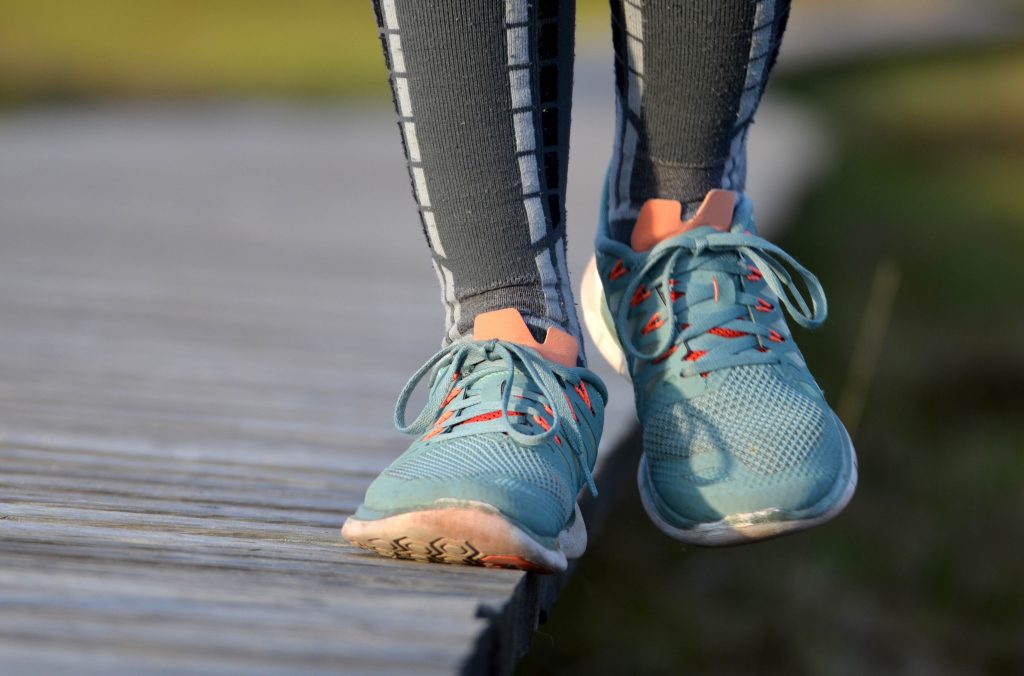
Finding the right fit is paramount when choosing running or walking shoes. A proper fit ensures comfort, prevents injuries, and enhances your overall running experience. To find the perfect fit, understanding your foot measurements and the nuances of shoe sizing is crucial.
Measuring Your Feet
Measuring your feet is the first step towards finding the right shoe size. You should measure your feet at the end of the day, as your feet tend to swell slightly throughout the day. Follow these steps for accurate measurements:
- Stand on a hard surface with your feet shoulder-width apart.
- Place a piece of paper against a wall with your heel touching the wall.
- Trace the Artikel of your foot on the paper with a pen or pencil.
- Measure the length of your foot from the heel to the longest toe.
- Repeat the process for both feet, as they may differ in size.
Choosing the Right Shoe Size
Once you have your foot measurements, you can use a shoe size chart to determine your shoe size. Remember that shoe sizes can vary slightly depending on the brand and style of the shoe. It’s always recommended to try on shoes before purchasing them to ensure a proper fit.
Signs of an Ill-Fitting Shoe
A poorly fitting shoe can lead to discomfort, blisters, and even serious injuries. Here are some signs of an ill-fitting shoe:
- Tightness or pressure points:If you feel any tightness or pressure points on your feet, the shoe is likely too small.
- Blisters or chafing:Blisters and chafing are common signs of shoes that are too small or don’t fit properly.
- Numbness or tingling:Numbness or tingling in your toes or feet can be a sign of a shoe that is too tight or constricting blood flow.
- Heel slippage:If your heel slips out of the shoe while walking or running, the shoe is likely too big.
Trying On Running Shoes
Trying on running shoes is essential to ensure a proper fit. Here are some tips for trying on shoes:
- Wear socks you would normally wear for running or walking.This will help you get a more accurate feel for the fit.
- Walk around the store for a few minutes.This will give you a chance to feel how the shoes feel on your feet.
- Pay attention to the toe box.The toe box should be wide enough to allow your toes to wiggle freely.
- Make sure there’s enough room in the heel.Your heel should fit snugly in the shoe, but it shouldn’t slip out.
- Don’t be afraid to try on multiple pairs.It’s important to find a shoe that fits your feet well and feels comfortable.
Testing the Fit
After trying on a few pairs of shoes, it’s important to test the fit further. Here are some tips for testing the fit:
- Walk or run on a treadmill.This will give you a better feel for how the shoes feel on your feet during activity.
- Pay attention to how the shoes feel on your feet.Do you feel any pressure points or tightness? Are your toes comfortable? Does your heel slip out of the shoe?
- Listen to your body.If your feet start to feel uncomfortable, it’s a sign that the shoes are not the right fit.
Exploring Shoe Brands and Models
Once you’ve considered your needs and the key features of running shoes, it’s time to dive into the vast world of brands and models. There’s a shoe out there for every runner, so don’t be overwhelmed by the choices. Let’s explore some popular brands and their key offerings.
Popular Running Shoe Brands and Their Key Features
This table provides a quick overview of some popular running shoe brands and their key features:| Brand | Key Features ||—|—|| Nike| Known for innovative technologies like ZoomX foam and React foam, offering both performance and comfort. || Adidas| Offers a wide range of shoes, from cushioned Boost models to lightweight and responsive Adizero models.
|| Brooks| Focuses on providing high-quality cushioning and support, particularly known for their Glycerin and Ghost series. || Asics| Known for their GEL technology, offering excellent shock absorption and cushioning. || Saucony| Offers a variety of shoes with a focus on responsiveness and stability, popular for their Kinvara and Triumph models.
|| Hoka One One| Known for their thick, oversized soles, providing maximum cushioning and a smooth ride. || New Balance| Offers a wide range of shoes with a focus on comfort and support, particularly known for their Fresh Foam series. |
Comparing and Contrasting Different Running Shoe Models
To help you narrow down your choices, let’s compare and contrast different running shoe models based on their intended use: Cushioned Shoes:* Nike Air Zoom Pegasus 39:A versatile and comfortable shoe suitable for daily runs and longer distances.
Brooks Ghost 15 Another popular choice for daily training, offering a smooth and cushioned ride.
Asics Gel-Nimbus 25 Known for its excellent cushioning and shock absorption, suitable for high-mileage runners. Stability Shoes:* Brooks Adrenaline GTS 23:Designed for runners with mild to moderate overpronation, providing stability and support.
Asics Gel-Kayano 29 A classic stability shoe, offering excellent support and a smooth ride.
Saucony Guide 15 A lightweight stability shoe, providing a responsive and supportive ride. Lightweight and Responsive Shoes:* Nike ZoomX Vaporfly NEXT% 2:A high-performance racing shoe designed for speed and efficiency.
Adidas Adizero Boston 11 A lightweight and responsive shoe suitable for tempo runs and races.
Saucony Kinvara 14 A versatile shoe for both daily runs and faster workouts.
Examples of Shoes Suitable for Different Running Styles
* Neutral:Runners with neutral gait patterns can choose from a wide range of shoes, including cushioned models like the Nike Air Zoom Pegasus 39 or the Brooks Ghost 15.
Stability Runners with overpronation (feet rolling inward excessively) need shoes with stability features to control their motion. Popular choices include the Brooks Adrenaline GTS 23 or the Asics Gel-Kayano 29.
Cushioned Runners seeking maximum cushioning for high-impact activities or longer distances should consider shoes like the Asics Gel-Nimbus 25 or the Hoka One One Bondi 8.
Additional Considerations
Beyond finding the perfect fit and choosing the right features, there are a few additional considerations that can significantly impact your running or walking experience. These factors, often overlooked, play a crucial role in maximizing comfort, performance, and extending the lifespan of your shoes.
Break-in Time and Proper Wear, How to shop for the best running or walking shoe
New running shoes require a break-in period to mold to your feet and provide optimal support. This process typically takes a few weeks and involves gradually increasing the duration and intensity of your runs or walks. During the break-in period, it is essential to wear your new shoes for short periods initially, gradually increasing the time spent in them.
This allows your feet to adjust to the shoe’s shape and materials, preventing blisters, discomfort, and potential injuries.
The Role of Socks in Comfort and Performance
Socks are often an afterthought, but they play a critical role in running shoe comfort and performance. The right socks can prevent blisters, wick away moisture, and provide cushioning and support. When choosing running socks, consider the material, thickness, and fit.
Moisture-wicking fabrics like synthetic blends or merino wool are ideal for keeping your feet dry, while cushioned socks can provide extra comfort and reduce friction. A snug fit is essential to prevent bunching and blisters, but avoid socks that are too tight, as they can restrict blood flow.
Caring for Running Shoes to Extend Lifespan
Proper care can significantly extend the lifespan of your running shoes and maintain their performance. Here are a few essential tips:
- Rotate Your Shoes:Avoid wearing the same pair of running shoes every day. Allowing your shoes to air out between uses helps them dry and reduces the buildup of moisture, which can lead to deterioration. Rotating your shoes also distributes wear and tear more evenly, extending their lifespan.
- Clean Your Shoes Regularly:Dirt, debris, and sweat can accumulate in your running shoes, impacting their performance and comfort. Use a soft brush and a mild detergent to clean the exterior of your shoes. Avoid using harsh chemicals or soaking your shoes in water, as this can damage the materials.
- Store Your Shoes Properly:Store your running shoes in a cool, dry place, away from direct sunlight. Avoid storing them in damp or humid environments, as this can encourage mold and mildew growth. Consider using shoe trees to maintain the shape of your shoes and prevent them from collapsing.
Last Word
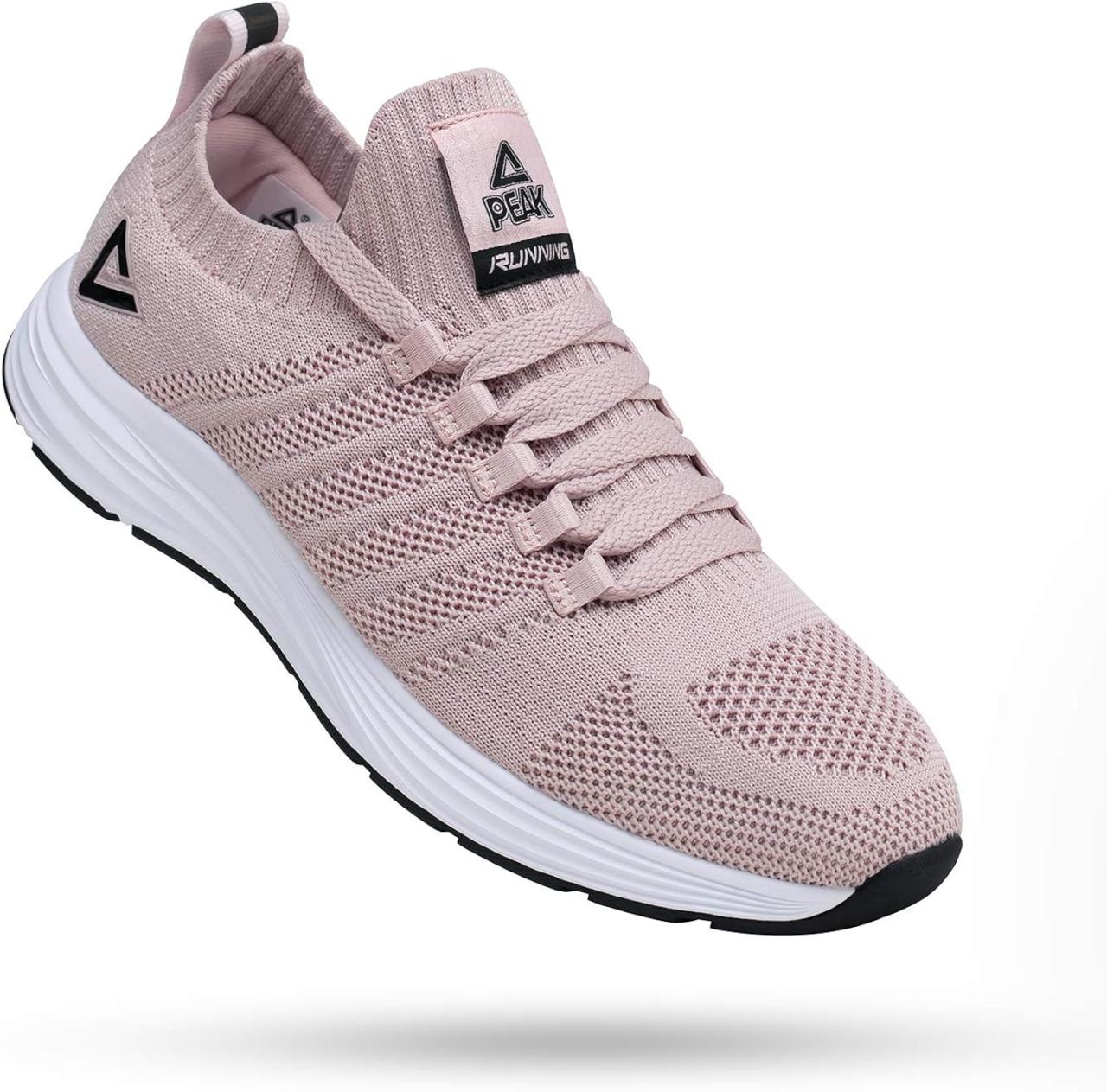
Armed with this knowledge, you’ll be equipped to navigate the world of running and walking shoes with confidence. Remember, finding the right shoe is a journey, not a destination. Don’t hesitate to try on multiple pairs, consider your individual needs, and prioritize comfort and support.
With a little research and the right fit, you’ll be on your way to a more enjoyable and injury-free running or walking experience.

